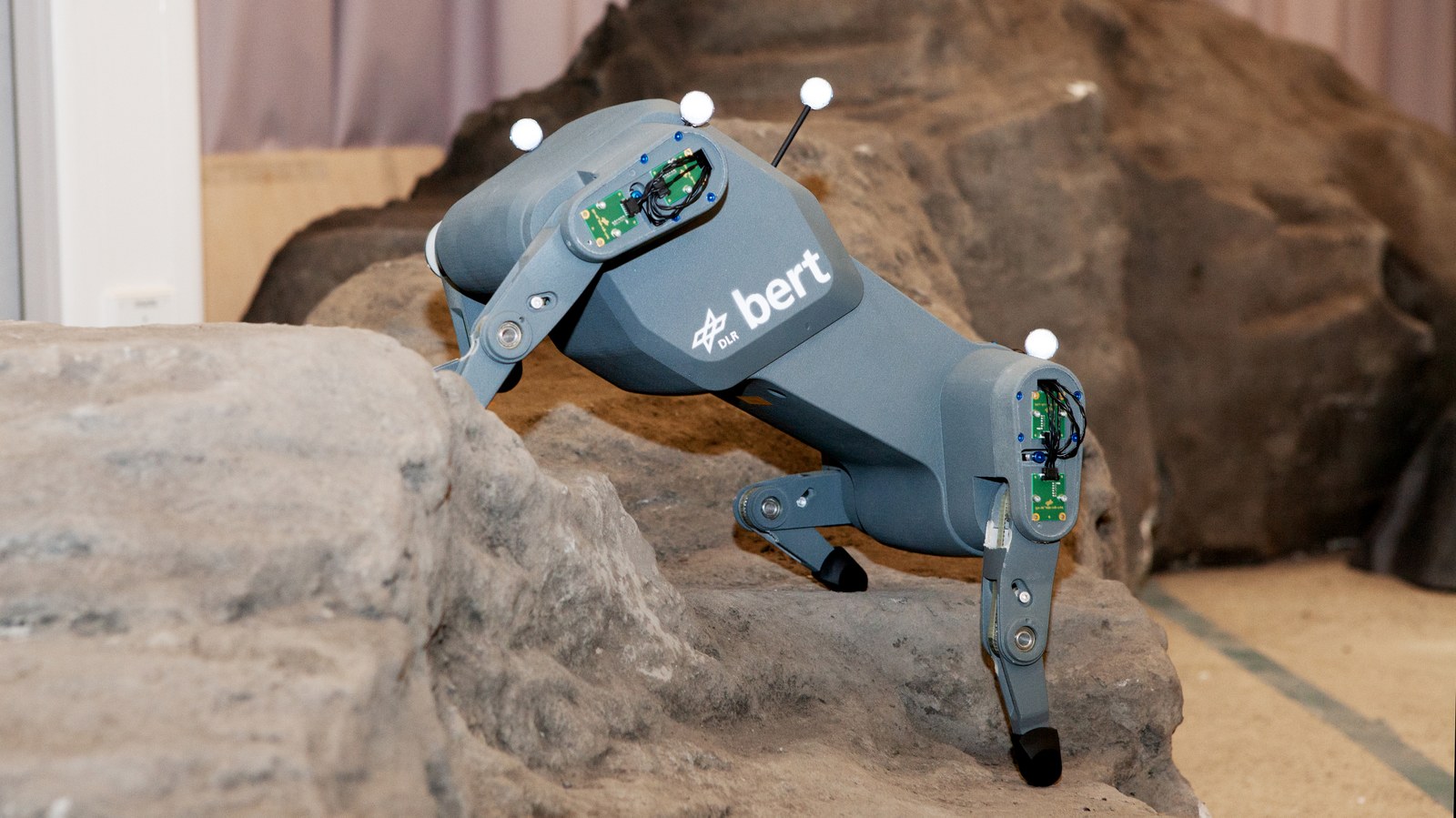Bert

The four-legged robotic system Bert is a platform for researching biological locomotion. The purpose of the system is to understand locomotor patterns and transfer them from nature to robotic systems. The legged robot is distinguished by its rapid prototyping concept in conjunction with inexpensive components. This allows various strategies and walking patterns to be explored quickly and flexibly on a single robot.
The Bert system was presented to the public for the first time in 2017.
Technical data*
Size: | 0,40 m × 0,30 m × 0,25 m |
Weight: | 3 kg |
Degrees of freedom: | 8 |
Speed: | approx. 0.8 km/h |
Power supply: | Wired or battery operated |
Drives: | SEA with non-ferrous DC motors |
Sensors: |
|
Special features: |
|
* The technical data varies between the individual versions.
System coupling
The legs with intelligent coupling are activated by series elastic actuators, which contain a mechanical spring between the motor and joint. These enable energy to be stored during the movement and then released again, which is a basic requirement for highly dynamic gaits. In addition to movement patterns like walking, trotting, galloping or ambling, research is also being conducted into options for controlled climbing. This is intended to produce a robotic system that is as versatile as possible while being able to travel long distances efficiently and move on rough terrain or in small burrows.
The basic platform is undergoing continuous further development in an iterative process. In the first generation, various basic gaits have already been implemented and researched on the low-cost system since 2016. In addition to the wired version for testing in laboratories, a battery-powered version has been built that is used especially for outdoor experiments. To ensure a reliable and powerful robot was available for everyday research purposes, the robot was redesigned in 2018 and finalised as a second generation. In this process, the drives, energy supply and mechanical structure were significantly enhanced.
Bert is especially used in applications with very demanding hardware requirements. Some examples include four-legged jumping or the execution of learning algorithms, which attempt to develop efficient types of locomotion through targeted trial and error.
Future developments will enhance the robot’s skills, for example, by adding a “shoulder joint” to the system and integrating new sensors for perceiving the environment.
In 2019, Alin Albu-Schäffer won the prestigious ERC Advanced Grant with the M-Runners project. The goal of the project is to increase the knowledge gained in relation to the principles of leg-based movement so that four- and two-legged robots can be developed that have similar motion characteristics in terms of versatility and efficiency as their biological models. The Bert robotic system is being used and developed as a basis for this project.



